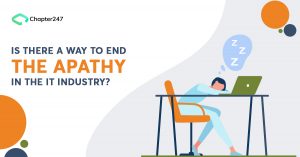Businesses are facing major setbacks, investors are cautious about making investments in zones which will take time to recover, and the times are tough. With people locked in their homes for the fear of contracting the virus, industries all around the world are battling it out to remain afloat in the race against extinction. But if there is something that has gained more mileage due to the lockdown are the mobile app development services which the customers are using more and more owing to the time they have in their hands.
With social distancing norms getting stricter by the day, businesses are now adopting newer plans so that they can progress with their business and ideas. These plans do not negate the concept of social distancing as they neither demand any physical presence nor physical contact. The entertainment industry is flourishing with subscriptions to online video streaming platforms going up north. It is more or less limited to mobile screens and video sharing platforms like Youtube which is loved by people.
Several industries have suffered but many have been quick to adopt the online mobile application market which is strongly dominating the market circles.
Here in this article, we will be discussing the five most profitable industries in this clogged market.
- Education Industry
- Healthcare Industry
- Crowdfunding
- Ecommerce/marketplace
- Logistics and supply chain industry
Education industry – When learning can’t be stopped
Schools and colleges, without doubt, are places where many students assemble to study and socialize. Hence when the virus spread faster, orders everywhere were common and that was to shut schools and colleges. The education industry is a blended industry wherein there are some players who have already switched a major part of their teaching to online methods, yet there are some who are yet to adopt these principles. Several educational mobile applications have been built which has proven to be a friendly environment for learning enthusiasts. AI integration tools in mobile application development services also have fulfilled the ever-increasing demand of learners. The digital toolbox has allowed for continuous engagement between a student and the teacher. These online apps are in high demand and smart learning technology has surely entered the classrooms in a smarter way.
Read this- Mobile Applications: A Growing Trend in the E-learning Industry
Students who have been spending a surmountable time on their social media apps are also spending considerable time on educational apps.

Source: The manifest
Even now the educational apps are winning in popularity with it being the third most popular category of mobile applications. The time is such that it is demanding the education industry to take the right step and move towards what is more pragmatic when the social distancing is the demand of the time. Stronger data support for supporting online education over sturdy cross-platforms are provided below
Also read: How Learning has changed post COVID-19
- Close to 67% of US companies are already offering mobile learning through mobile applications.
- Between the years 2000 – 2017 the E-learning culture has increased by a huge 900%.
- By 2025 the overall E-learning market is estimated to be around $325 Billion.
E-learning massively reduces the cost and also goes a long way in reducing the costs associated with mobile application development. When IBM switched to E-learning it was touted to save more than $200 million.
We have helped Analyst Prep to put together a combination of next-generation learning tools to ensure students achieve success while they prepare for their financial majors like CFA & FRM.
COVID-19 pointers: Remember to study but not go out. It is important to stay at home as everything is available online!
Healthcare Industry – The saver of lives
In terms of revenue generation and stability, the healthcare industry is considered to be a safe haven, especially during the pandemic. Now while the lockdown has paralyzed economic services, the global healthcare market will hardly be affected by it. In fact, there is an overrunning of resources that are difficult to handle which is why mobile application development companies are loaded with demands to create new mobile apps that will help handle the crisis. The healthcare segment has largely integrated with technology and apart from hospitals and health centers having their own apps, online medicine delivery, on-demand doctor apps, and many such apps are crowding the market to benefit people during COVID-19.
The crisis has increased the demand for such apps. Internet of Things (IoT) has given this an additional push with mobile application development services. As per reliable estimates, the global IoT healthcare market will witness an annual growth of about 20% Year on Year from 2020 to 2025. The growth of wearable devices also has made the necessary infusion of positive impact. These applications are not just to provide information but it is also proving to be a valuable tool to catch hold of symptoms. There is a growing need for a connected healthcare system because it not just brings benefits of reduced costs, but also guarantees better treatment and a real-time management of symptoms.
Currently, the most used healthcare mobile applications are proving to be a blessing for the entire healthcare industry.
- You could get an application which enables the patients to get a real-time wait-time report of their doctors so that they do not have to go out and run the risk of getting infected. Patients do not have to wait in long lines plus they also get a minimum symptom checker so that they do not have to panic.
- Another mobile application idea which also endows its patients with several options to connect with top medical professionals who are registered on the network. The app aims to cut down the additional costs of visiting the hospital, and also is safer as it will minimize physical contacts.
- Few healthcare agencies have their own monitoring platform that helps in engaging the patients in their homes and will also help in easy communication between the quarantined population and their relevant healthcare service. This platform uses AI in order to provide healthcare providers the ability to identify those patients whose health is falling apart and take measures to improve on them.
With the recent advancements in telehealth and telemedicine technology, revenues in the industry are increasing which is helping them research innovative solutions. These online medical mobile applications provide a gamut of telemedicine and telehealth services with remote consultation, medicine delivery and doctor on demand. The market by the end of 2020 is estimated to be $24billion as per a global EHR report.
COVID-19 pointers: Unless required, do not visit hospitals and healthcare centers as you run a higher risk of contracting the virus there!
Our detailed blog on telehealth and its application will strengthen your wisdom on these!
Crowdfunding – An essential partner in crisis
Crowdfunding is a great way to raise capital with collective contributions and efforts of family, friends, customers and individual investors. It tunnels through a large pool of people usually on social media and other crowdfunding specialist platforms by optimizing its use to reach the maximum number of people possible.
The public health crisis has unleashed uncertainties across the world and crowdfunding too is in much vogue as the industry is based on smart ideas, money and much more. Factories, retail stores, and even many manufacturing units have stopped their operations in the last few days and blue-collar workers who constitute a large workforce in the world, are left with no viable income. In many countries, they are also making desperate attempts to find food and safe places to stay. With the kind of help needed now, several digital crowdfunding platforms have come forward to provide their assistance. Crowdfunding platforms have indeed given rise to a new route to collaborate and also mobilize support during the time of crisis.
The outbreak has generated a lot of uncertainty including the crowdfunding community. Due to social distancing measures, people are more online than they used to be. Digital marketers are craftily making messages which they believe will receive good returns as people are more online. Traditional E-commerce platforms have also shrunk their advertising budgets but crowdfunding campaigns on social platforms like Facebook and Instagram are becoming popular. These crowdfunding campaigns do not have to worry about any inventory constraints as the people who back it are not expecting to receive their products immediately.
For instance, in the US Prompt had launched a funding goal on 25th February. This funding goal was achieved in 19 days. Amidst the turmoil in the US, the company continues to go upward in terms of funding. Oros which is a popular apparel brand also came forward with its campaign on March 10th. It got fully funded in 2 hours and still continues to raise money and have exceeded $210,000 in their collection.
Don’t go with what we say, check the promising statistics below:
- Projected total crowdfunding raised by 2025: $300 billion USD.
- Total crowdfunding raised worldwide, from 2014 to 2016: $2.1 billion USD.
- Campaigns with personal videos raise 105% more than those that don’t have them.
- The average success rate of a crowdfunding campaign is 50%.
- 78% of crowdfunding campaigns exceed their goal.
COVID-19 pointers: Remember to contribute whenever possible.
Ecommerce / Marketplace apps – The new normal
Bloomberg notes that close to half of the retailers have witnessed downward trends in their online traffic. But, retailers also have seen a 64.5% increase in shifts towards E Commerce post-COVID-19. These figures are a bit contrasting which is why it can be said that the current situation is a tad confusing.
In the initial period when COVID-19 spread and was officially declared a pandemic by WHO, the instant reaction of people was to stock up essentials. They resorted to online apps both native and progressive web applications and stocked medical supplies like sanitizers, masks, and household essentials especially bread and toilet papers. Very soon, these E-commerce platforms started facing the heat of the pressure and struggled to keep up with the demand. The large-scale panic buying on mobile apps was a result of uncertainty surrounding the crisis. Apart from safeguarding themselves with the essentials, people are also resorting to buying packaged and canned food items like rice, pasta, oatmeal, and common steps to prepare for the emergency situation. Online marketplace applications for essentials items have soared high to counter the situation eliminating the need to come out often and run the risk of contracting the disease. So to overall assess the situation the following E-commerce trends that have been noticeable are
- The highest selling product on marketplace apps has been products related to hygiene especially toilet papers. The sale also includes items like antibacterial sprays, sanitizers where online stores have seen an increase of a huge 817%.
- A sizeable increase in the sale of medicine has been registered on these apps. People were looking for medicines for cold, cough and flu due to virus fears. Online app purchases of medicines have increased by 198%.
- The increase in the purchase of groceries through these apps has seen a jump with non-perishable items seeing a surge of 69%.
COVID-19 pointers: Do not overstock as governments across the world will ensure the delivery of essential supplies.
Supply chain – the skeleton of the delivery system
During this pandemic, the proper functioning of supply and delivery networks is of utmost importance The economics is directly related to the logistics and the proper interchange paces the way for better procurement of the needed strategy. Artificial intelligence and navigation technology are playing a collaborative role in the logistics industry. In order to ascertain the time of delivery, location of the vehicles delivering the essential supplies, incurred loss and much more, these technologies go a long way in enabling people to get what they want without worrying. IT goes a long way in ensuring the functioning of logistics is smooth with these functionalities
1.) Order processing: the necessary software enables the users to check the status of the order, availability of the goods, and order acknowledgment. This automation helps users to rest assured about their orders.
2.) Planning inventory: We also provide software for inventory forecasting especially when people are stocking, forecasting the future demand based on extensions of lockdowns, optimization of services and deployment of inventory.
3.) Storage of goods and transportation: With the help of GPS and other navigation devices and software this becomes smoother.
COVID-19 pointers: All that is required will be delivered, hence there is no need to panic!
Wrap up
The pandemic has halted the prospects of several businesses but there are some industries that are doing pretty well. The focus of the customers has now gone on to those industries which are using digital tools to conduct their businesses like the ones we mentioned above. The above-mentioned industries are running very well thanks to their timely and proactive efforts to have a well-built mobile application in place. Our mobile application development services offer agile solutions to our partners and collaborators. By following the scrum methodology we conduct timely interaction with the client to appraise them of the latest development on the mobile application development stages.
Connect with us to know more!








